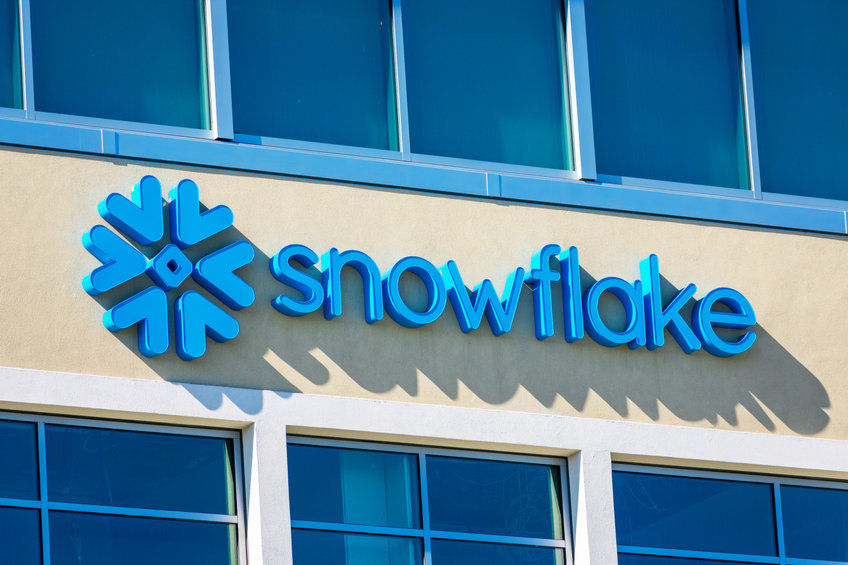
Wells Fargo downgrades Snowflake ahead of Q2 earnings: Is it time to sell?
- Wells Fargo downgrades Snowflake to 'Equal Weight'; cuts target to $130.
- Concerns: Data breach, rising competition, and potential customer churn.
- Stock remains weak; key levels to watch: $108 support, $142.60 resistance.
Wells Fargo has downgraded Snowflake Inc. (NYSE: SNOW) from “Overweight” to “Equal Weight,” slashing its price target from $200 to $130.
This move, announced ahead of Snowflake’s Q2 2025 earnings report scheduled for August 21, reflects growing concerns about the company’s performance and market position.
The downgrade comes in response to a range of issues impacting Snowflake.
A recent data breach, which affected major clients like AT&T and TicketMaster, has raised doubts about Snowflake’s ability to maintain customer trust.
Additionally, the company faces intensified competition from industry giants such as Databricks, Amazon Web Services (AWS), and Microsoft Azure, all of which offer comprehensive solutions that challenge Snowflake’s market share.
Wells Fargo’s decision also highlights concerns over Snowflake’s competitive edge.
Analysts worry that rising competitive pressures and questions about the company’s technological advantages have led to a more cautious outlook.
Analysts project $0.89/share loss
Copy link to sectionSnowflake’s upcoming Q2 2025 earnings report is expected to provide further insights into its financial health.
Analysts project a GAAP per-share loss of $0.89 on revenue of $850.14 million.
This contrasts with a loss of $0.69 on revenue of $674 million in the same quarter last year.
The downward revision in EPS estimates by 28 out of 33 analysts over the past three months underscores growing skepticism about Snowflake’s ability to meet expectations.
Piper Sandler also reduced Snowflake’s price target
Copy link to sectionThe downgrade from Wells Fargo is part of a broader trend of skepticism on Wall Street.
On July 12, 2024, Piper Sandler also reduced Snowflake’s price target from $240 to $165, citing concerns about a weakening macroeconomic backdrop and its impact on growth rates.
Similarly, Bank of America noted that despite a 16.4% increase in total page views year-over-year in July, Snowflake faces challenges in capitalizing on the AI trend that has benefited other tech stocks.
Signs of strain?
Copy link to sectionSnowflake’s aggressive investment in AI and machine learning solutions, including Cortex AI and Snowflake ML, aims to bolster its competitive stance but has delayed its path to profitability.
These investments, while critical, have strained Snowflake’s financials, with weakened free cash flow and pressured operating margins.
Despite boasting over 9,000 customers, Snowflake’s growth is increasingly driven by its user-friendly, low-code solutions, which may not be enough to compete with the advanced AI capabilities of rivals.
Snowflake’s stock continues to trade at a premium, with a price-to-sales ratio of 14, despite slowing revenue growth.
This high valuation relative to its fundamentals suggests that investors may need to adjust their expectations.
The broader macroeconomic environment, with pressured IT budgets and extended sales cycles, adds further uncertainty to Snowflake’s growth prospects.
As Snowflake’s stock has declined by 36% year-to-date, the upcoming earnings report could be a crucial turning point.
Failure to meet revenue and earnings targets may lead to further downward revisions and increased pressure on the stock.
Conversely, positive results could temporarily restore investor confidence.
In the coming days, analyzing Snowflake’s price trajectory through technical charts will provide additional insights into whether the stock is poised for a recovery or if it will continue its downward trend.
Snowflake remains weak on daily charts
Copy link to section
Snowflake’s stock saw a rapid surge between November last year and February this year but gave up all those gains by crashing 50% from its February peak. While the stock has had a decent bounce back over the past few days from its recent swing low near $108 made on August 5, it still remains weak on the daily charts.

Source: TradingView
Long-term investors who have a bullish outlook on the stock but haven’t bought it yet must avoid doing so until the company reports its Q1 earnings and the stock starts trading above its recent swing high at $142.60.
Traders who continue to be bearish on the stock must also be cautious of shorting it outright going into the earnings. One can use the Put options expiring on August 23 or September 20 to do so.








